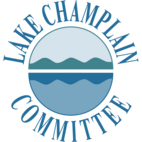The Season of Peak Water Use
July 2011

Summer is here. Swimmers no longer need to brave the cold as the lake has warmed up over 700 F according to USGS gauges. The lake level, though still high, has receded well below flood stage. The first harvests of the gardens are in and gardeners need to turn their attention to weeding and watering.
Summer’s rising temperatures often coincide with rising water use. “Peak” water use describes the time of year when residential water use is at its highest due to an increase in outdoor water use, usually from late July through early August. The amount of water homeowners use to keep their lawns green or fill their backyard pools spikes during this season—to the tune of about four times as much water or more than the rest of the year. Some homes use as much as 3,000 gallons on a peak day, or the equivalent of leaving a garden hose running for nearly 8 hours.
When temperatures rise and rain is scarce, peak water use in single-family homes usually occurs due to lawn and garden watering or when topping off a swimming pool. Up to 50 percent of the water we use outdoors goes to waste from evaporation or runoff due to overwatering. Peak use typically occurs on weekends when people use their free time to tend to lawns and landscapes, do laundry, and wash cars.
Water conservation can sometimes seem a silly issue. In areas like the Northeast water is abundant as we amply saw this spring. However conservation is important even here because wasting water does contribute to lake pollution and wastes energy.
Water wasted outdoors becomes part of the stormwater load to Lake Champlain. Water flowing over driveways and walkways picks up a stew of nutrients, oils, debris, and other pollutants and carries them to streams and the lake. Additionally, any water that comes from municipal delivery systems likely has phosphorus added. Municipal systems add phosphorus to drinking water to prevent lead from leaching from pipes. Water wasted on lawns, gardens and driveways delivers this extra phosphorus directly to our waterways when it becomes stormwater.
Wasting water also wastes energy. Water is heavy and energy must be used to transport it from its source in a well or Lake Champlain uphill to where it is being used. Many municipalities pump water to a high point in the landscape and then let gravity bring it to houses (look around for water towers). As a result, letting a faucet run for five minutes uses about as much energy as letting a 60-watt light bulb run for 14 hours
Here are some simple tips for saving water outdoors:
Step on it: Grass doesn’t always need water just because it’s hot out. Step on the lawn, and if the grass springs back, then it doesn’t need water. An inexpensive soil moisture sensor can also show the amount of moisture at the plant’s roots and discourage overwatering.
Time it right: It’s best to water lawns and landscapes in the early morning and late evening because significant amounts of water can be lost due to evaporation at other times of day. Also, shorter stints of watering allow for better absorption by plants and soil and less runoff.
Tune up your system: Inspect any irrigation systems you might have and check for leaks and broken or clogged sprinkler heads. Fix sprinkler heads that are broken or spraying on the street or driveway.
Give your hose a break: Sweep driveways, sidewalks, and steps rather than hosing them off. And don’t forget to check for leaks at your spigot connection and tighten as necessary.
Leave it long: Raise your lawn mower blade. Longer grass promotes deeper root growth, resulting in a more drought resistant lawn, reduced evaporation, and fewer weeds.
Reuse: Use excess water from the sink, humidifiers, or rainbarrels to water plants and gardens.
Nuzzle your nozzle: Use a hose nozzle and turn off the water when you wash your car.
Even in years of abundant water like we’ve had this year, conservation matters. Simple steps you can take around your home to save water help to protect Lake Champlain. For more information on peak water use and ways to conserve, visit LCC’s website and www.epa.gov/watersense/outdoor.
Lake Look is a monthly natural history column produced by the Lake Champlain Committee (LCC). Formed in 1963, LCC is the only bi-state organization solely dedicated to protecting Lake Champlain’s health and accessibility. LCC uses science-based advocacy, education, and collaborative action to protect and restore water quality, safeguard natural habitats, foster stewardship, and ensure recreational access.
Get involved by joining LCC using our website secure form (at www.lakechamplaincommittee.org), or mail your contribution (Lake Champlain Committee, 208 Flynn Avenue - BLDG 3 - STUDIO 3-F, Burlington, VT 05401), or contact us at (802) 658-1414, or lcc@lakechamplaincommittee.org for more information.
